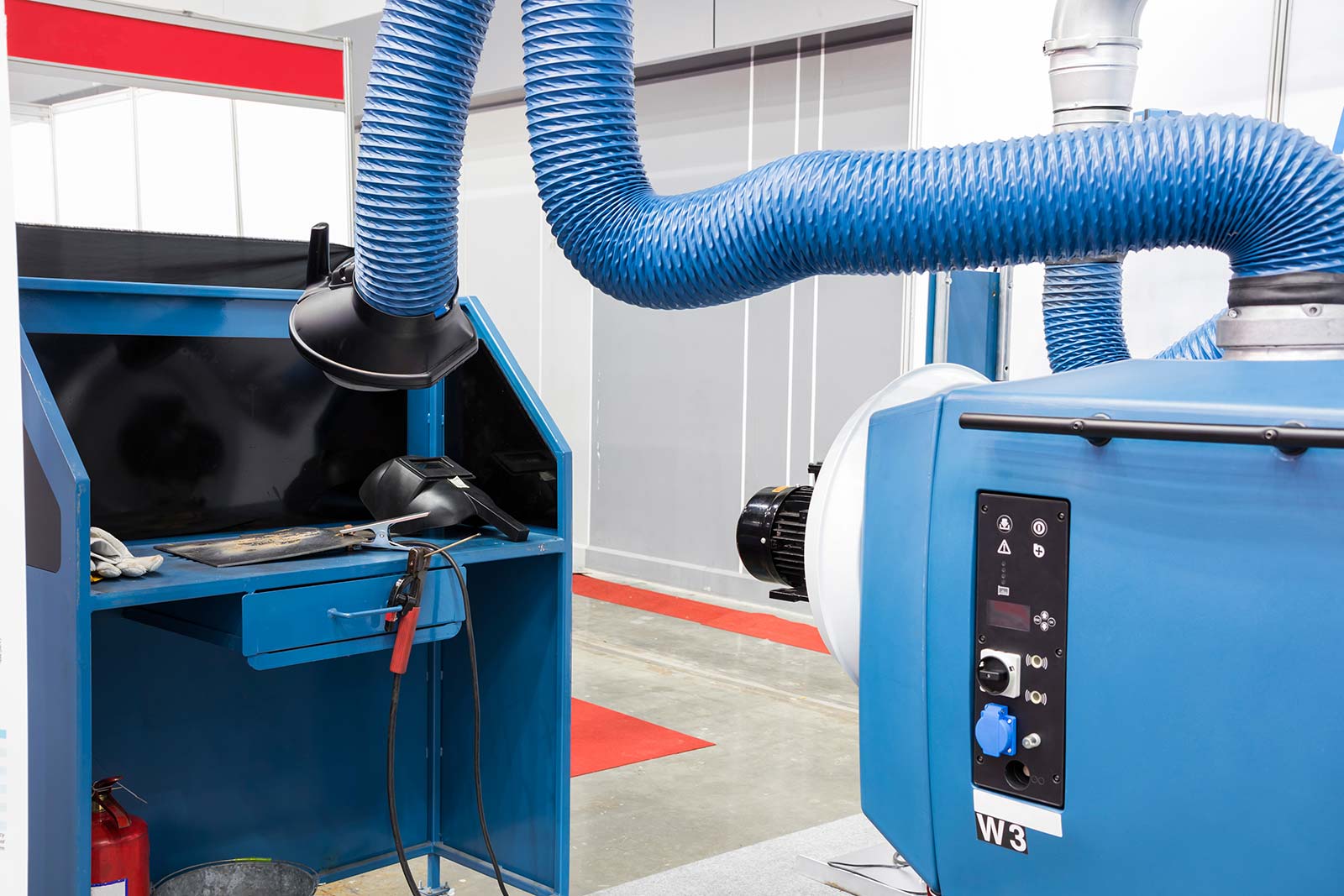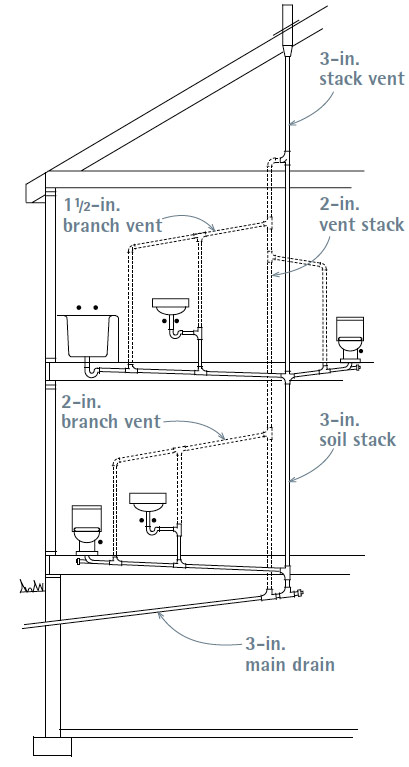Why Correct Ventilation Matters in Plumbing Systems
Why Correct Ventilation Matters in Plumbing Systems
Blog Article
Just how do you actually feel on the subject of What Are Plumbing Vents and Why Are They Important??

Appropriate ventilation in plumbing systems is usually overlooked, yet it is essential for maintaining the capability and safety and security of your home's pipes. Air flow assists control air pressure, avoid the accumulation of harmful gases, and guarantee the effective elimination of waste. In this overview, we will explore the value of correct pipes air flow, how it works, and the advantages it brings to your pipes system.
Understanding Ventilation in Plumbing
Ventilation in pipes refers to the network of pipelines that allow air to move with the drain system. These vents offer numerous functions, including managing air pressure within the pipes, preventing sewage system gases from going into the home, and helping in the smooth flow of wastewater.
Exactly How Air Flow Functions in Plumbing Equipments
Air Pressure Law
Proper ventilation keeps balanced air pressure within the pipes system. When water streams with pipelines, it displaces air. Without adequate ventilation, this displacement can produce unfavorable pressure, causing slow down drains pipes or siphoning of water from traps, which can create unpleasant odors to leak right into the home.
Stopping Sewer Gas Buildup
Among one of the most crucial features of plumbing vents is to stop sewage system gases, such as methane and hydrogen sulfide, from gathering within the home. These gases can position severe wellness threats and are extremely flammable. Vent pipelines permit these gases to escape securely outside.
Assisting in Waste Elimination
Air flow helps in the effective elimination of wastewater by protecting against airlocks in the drain system. When air can stream openly with the vents, it enables water and waste to move smoothly with the pipelines, lowering the danger of clogs and back-ups.
Kinds Of Plumbing Vents
Main Stack Vent
The major pile air vent, additionally referred to as the air vent stack, is the key vent in a plumbing system. It prolongs from the main drainpipe align via the roof covering, allowing gases to run away and fresh air to get in the system.
Branch Vent
Branch vents attach to the major pile vent and offer individual fixtures, such as sinks, commodes, and showers. These vents make sure that each component has ample ventilation to operate appropriately.
Air Admission Valve (AAV).
An Air Admittance Valve (AAV) is a one-way shutoff that allows air to go into the pipes system without the requirement for a standard vent pipeline extending through the roofing. AAVs are frequently used in remodellings or locations where installing a typical vent is not practical.
Indications of Poor Ventilation in Pipes.
Slow Draining Fixtures.
If your sinks, tubs, or toilets are draining pipes slowly, maybe an indication of poor ventilation. Insufficient air circulation can produce a vacuum impact, making it difficult for water to drain pipes appropriately.
Gurgling Appears.
Gurgling audios originating from drains pipes are typically an outcome of air being drawn through water catches due to negative pressure in the pipes. This is a clear indication of insufficient ventilation.
Undesirable Odors.
Drain odors inside your home are a warning that your plumbing system is not appropriately aerated. This might imply that sewer gases are not being effectively aired vent outside, resulting in possibly harmful conditions.
Usual Air Flow Blunders.
Inadequate Vent Sizing.
Using small vent pipelines can lead to inadequate air circulation and stress inequalities in the system. It's important to utilize vents that fulfill the specific demands of your plumbing system.
Improper Vent Placement.
Putting vents as well much from the fixtures they offer can minimize their efficiency. Correct positioning ensures that air can stream freely and effectively with the system.
Ignoring Code Demands.
Building regulations supply particular guidelines for pipes air flow. Disregarding these codes can result in a system that falls short to work correctly and may result in costly repair work or health hazards.
Advantages of Proper Ventilation.
Enhanced System Performance.
Appropriately aerated pipes systems operate a lot more efficiently, with less blockages, faster draining pipes, and less stress on the pipelines. This effectiveness expands the lifespan of the plumbing system.
Improved Air Quality.
By preventing drain gases from entering your home, appropriate ventilation contributes to much better interior air high quality, making your living environment healthier and extra comfortable.
Preventing Water Damages.
Ample air flow aids prevent water from being siphoned out of catches, which can bring about sewer gases getting in the home and triggering water damages over time.
Steps to Make Sure Appropriate Air Flow.
Consulting Pipes Codes.
Always get in touch with regional plumbing codes when developing or customizing your pipes system. These codes provide the essential standards for correct venting and guarantee your system fulfills security standards.
Regular Examination and Upkeep.
Normal assessments can assist identify potential ventilation concerns before they become major troubles. Upkeep jobs, such as cleansing vent pipes and checking for blockages, are essential for maintaining the system in good working order.
Specialist Installation.
For new setups or major alterations, it's smart to hire a professional plumbing technician. They have the proficiency to ensure the air flow system is properly designed and set up according to code.
Verdict.
Appropriate ventilation is a crucial component of any kind of plumbing system, ensuring that it operates successfully and securely. By understanding the importance of ventilation, acknowledging the indications of inadequate air flow, and taking steps to preserve your system, you can stop pricey issues and protect your home's air high quality.
4 Things You Should Know About Your Plumbing Vents
What Plumbing Vents Are
Also called a vent stack, a plumbing vent is a vertical pipe attached to your drain line that runs through your roof. The plumbing vent pipe, or plumbing air vent, removes gas and odors from your plumbing system and allows fresh air to enter the pipes, helping the water to flow out of the drain pipes.
What Plumbing Vents Do
Plumbing vents have two basic functions. One of which is to allow unpleasant smelling wastewater and sewer gasses to escape your plumbing system instead of entering your home. Plumbing vent pipes are typically located on roofs, away from windows, to ensure the fumes exit the home completely.
The other function of the plumbing vent is to move fresh air into your plumbing system. This helps move water through every plumbing fixture in your house, like toilets and sink drains. Think of the way in which you need to let a little air into the bottle as you pour soda in order to make the drink flow smoothly.
Different Types of Plumbing Vents
True vent: This is the most common vent option. In simplest terms, a true vent is a vertical pipe attached to your drain line that exits through the roof. They often function as the main vent that other fixtures can connect to. Re-vent pipe or auxiliary vent: Attached to the drain line near specific plumbing fixtures, re-vent pipes run up and over to connect to the main vent. Common vent: Two plumbing fixtures installed on opposite sides of a wall are typically tied into the vent stack using something known as a sanitary cross. Wet vent: This venting option operates as a drain pipe and a vent at the same time. Wet vent drainage systems drain water from one fixture while venting the air from another. Although they’ve been used for over 100 years, wet vent systems have only recently been added to the plumbing code in many areas. If you’re planning on installing one in a bathroom remodel, make sure you check your local code prior to construction. Loop vent: For free-standing fixtures like kitchen island sinks, loop vents are ideal. These vent pipes run under the floor, rise from the P-trap, and create a loop inside the cabinet sink. Air admittance valve: An AAV is a one-way mechanical valve typically installed at the site of the plumbing fixture. AAVs allow venting to occur without having to tie into a larger venting system. They’re ideal for venting fixtures where you aren’t able to easily connect to an existing vent system. Common Plumbing Vent Issues
Although vent pipes typically don’t have water flowing through them, they’re still subject to many typical plumbing issues. For example, clogs are one of the most common problems associated with sewer vent pipes. If your vent pipe gets clogged, all of your plumbing fixtures tied into the vent stack will be affected.
A sink with a slow drain that bubbles and gurgles or a strong sewage smell around your toilet are both indicators that your toilet vent pipe is clogged. Because most vent pipes exit through the roof, old leaves, twigs or even a bird’s nest could be clogging the pipe.
Clogs in your vent pipe system cause a buildup of negative pressure, meaning that water won’t be able to flow out of your home very well. It’s similar to putting your finger over the opening of a straw to trap water inside. When you remove your finger, the water is able to flow out of the straw.
If you suspect you have any blockage in your vent, make sure you have a professional come examine the situation. Left unchecked, a blocked air vent can lead to other costly repairs, like leaks and sediment buildup.
Under Pressure
Pipe vents are essential aspects of a home’s plumbing system. Owning a home means learning about all sorts of things you never put much thought into before. But by understanding as much as you can about the important systems of your home, you can keep those budgets intact and those anxiety levels low.
https://www.homeserve.com/en-us/blog/home-improvement/plumbing-vents/

We had been brought to that write-up on What Are Plumbing Vents and Why Are They Important? through a good friend on another web property. You should take the opportunity to promote this content if you appreciated it. Bless you for your time. Come back soon.
Visit The Following Page Report this page